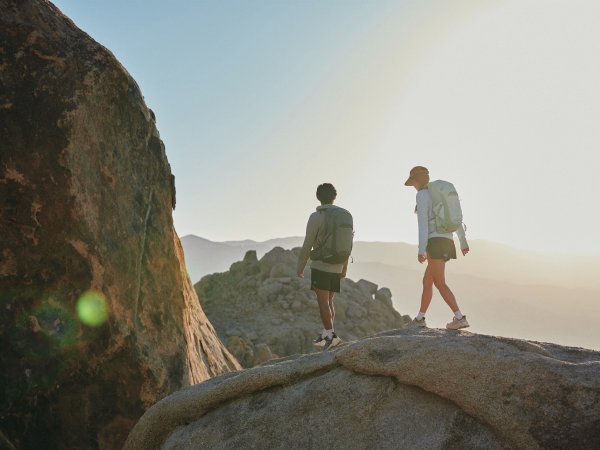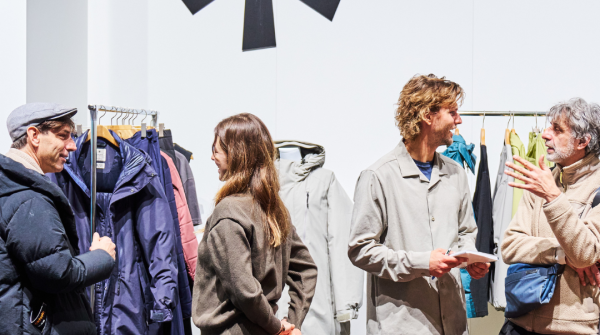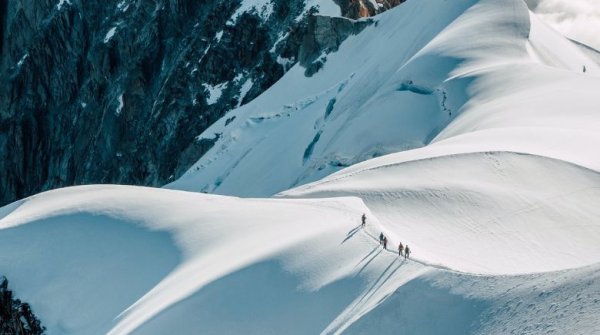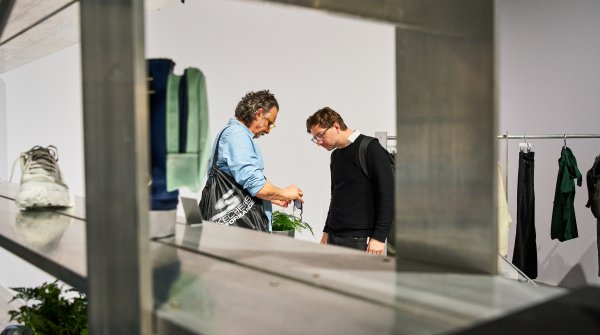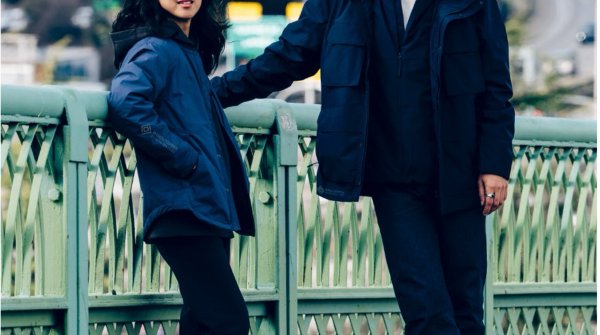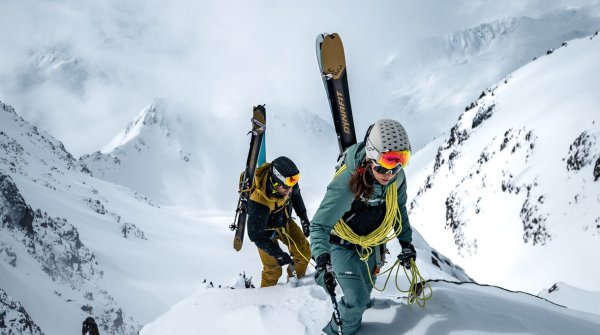In winter 25/26 and summer 2026, the focus will be on pastel shades and muted colors. This applies to winter styles from Norröna and Patagonia as well as hiking lines from Salewa and Bergans. The colorways remain unagitated so that garments from different brands can be easily combined - even with styles from previous years.
Backpacks are all the rage. One example is the mountain sports brand Rab, which is expanding its backpack collection. Sarah Kampf, PR Manager for Rab, explains: "We now offer many models with a 'narrow dimension', i.e. for a narrower back." Rab is currently expanding its range, offering new commuting models for cycling, for example. Osprey has also expanded its range again "with simpler models that have fewer features", explains Associate Director of Sales Christoph Schwer. This makes the backpacks "much more interesting in terms of price". At the other end of the price scale is Neza Peterka. The entrepreneur from Slovenia has specialized in ultra-light, tailor-made backpacks with her brand "What happened outdoors". Every year, she produces around 50 models that are individually tailored to the needs of her customers with minimal use of materials. Her customers include four alpinists who have been awarded the Piolet d'Or and wear her backpacks. Peterka is particularly proud to often manufacture for women who cannot find products that meet their measurements and requirements in the conventional backpack sector.
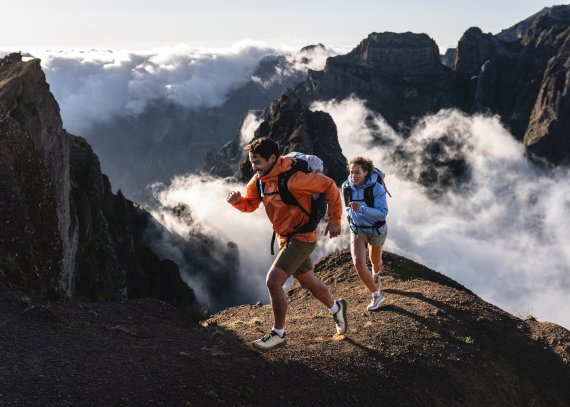
In the meantime, all manufacturers who use Gore-Tex shells have adopted PFAS-free materials. Only manufacturers who still have "remaining stocks could still use old membranes", says Hannu Haslach, Strategic Account Marketing Specialist at Gore-Tex. The ePe membrane is now on the market in all product and functional categories. For example, Patagonia is now also using the new membrane in its Pro Shell collection for the coming season.
Patagonia, as well as many other manufacturers such as Ortovox, Norröna and Houdini, make sure that different collections can be combined. The advantage for the end customer is obvious: the styles can be combined over the years. In addition to the PFAS-free shell, more attention is being paid to parts made from renewable raw materials or recycled materials. Recycling is called textile-to-textile recycling. If you are serious about it, you don't use materials made from recycled PET bottles, which are torn out of their material cycle. For the first time, Ortovox is not only using wool, but also a blend of down and wool for the thick winter jacket and recycled polyester for the teddy fleece.
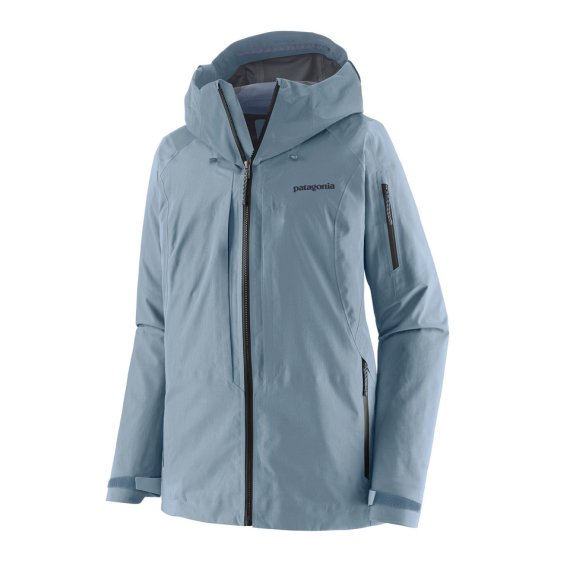
The eyewear specialists from 100% have expanded their range and now also offer goggles for winter sports enthusiasts. "The response has been very positive from retailers who know us from the summer," says Sportsnut Head of Marketing Thorben Kriener. The aim now is to win over those retailers who have not yet considered 100% for the winter market. The new goggles impress with improved contour perception, magnetically interchangeable lenses and a selection in three price categories. These features make the products attractive to a broad target group - and offer retailers clear added value when entering the winter sports market.
Dynafit is picking up on a trend that has become increasingly popular among athletes in recent years: Trail running in winter. Due to the milder winters, which have been increasingly influenced by climate change in recent years, many ski touring days are simply no longer possible. These are now increasingly being replaced by trail running or speed hiking, as the conditions for traditional ski tours are no longer reliable.
To support this trend, Dynafit has developed its own campaign and collection that addresses the new needs of winter trail runners with reflective colors and warmer designs than the summer styles.
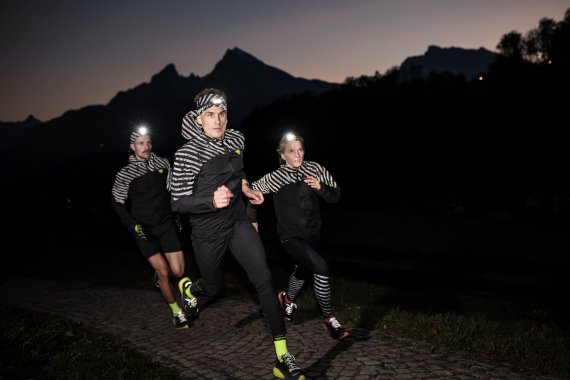
Skin protection is becoming an increasingly relevant topic due to ever more intense sunlight, which is being intensified by climate change. Many brands are responding to this by adding UV protection to their products. Patagonia has long focused on sun protection, particularly in its "fly fishing collection". Now they are increasingly focusing on mechanical protection with the UPF 40 label for other textiles too. "Of course, this is particularly relevant for children's clothing, but we also have the label on many other items in the 2026 collection," explains Philipp Lang from Patagonia. The advantage of mechanical protection is that it does not wash out, which ensures long-term effectiveness. Rab also uses UPF 40 for its base layers, for example.
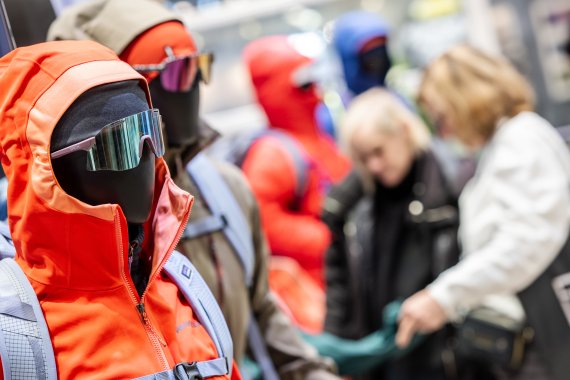
Many brands are focusing on expanding their range in 2026 - without diluting their brand essence. Ortovox is launching a collection for sport climbing on the market for the first time. Functional material blends such as Merino and Tencel are used - robust, breathable and sustainable.
Salewa picks up on the speed hiking trend again and launches a well thought-out collection. Different lines are aimed specifically at different personas: from fast and ambitious runners to athletes who also want to enjoy nature and relaxed hikers. Even matching playlists have been developed - their lyrics can even be found in the prints on the clothing.
Trail running remains an ongoing trend. 100% offers particularly lightweight glasses for runners, Rab complements them with functional caps - and reports strong sales at events. Bergans, previously positioned more in the outleisure segment, is also focusing on this segment and adding trail-ready styles to its collection.
In general, all brand representatives emphasize that direct contact with dealers is of crucial importance. Only through this exchange can benefits and innovations be communicated effectively. Retailers who understand the latest trends and developments at an early stage and incorporate them into their product ranges have the opportunity to act as pioneers in a rapidly changing market. At a time when sports and consumer behavior are becoming increasingly diversified, this exchange is essential in order to remain competitive.
ISPO 2025 offers the ideal platform for precisely this exchange. On site from 30. NOV. - 02 DEC. you will have the opportunity to make valuable contacts and develop your business sustainably through exchange, inspiration, innovative products, new brands and industry insights.
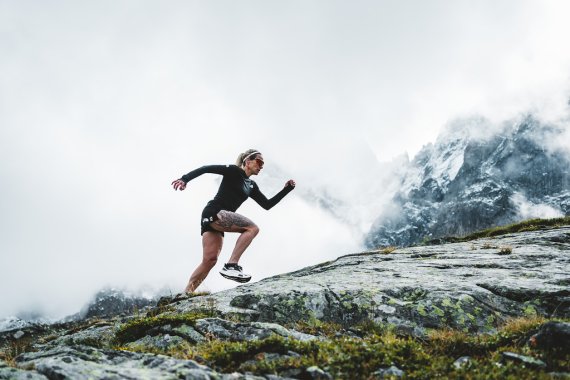
The sports industry is facing exciting changes that will have a lasting impact on retail. Here are the key points:
- Color trends 2026: Muted tones and pastel colors will prevail. These colors are easy to combine and look simple but elegant.
- Backpacks for every style: Backpacks will remain popular, from narrower models for smaller bodies to ultra-light, customized versions for specific needs.
- PFAS-free products: Winter 2025/26 will see an increasing focus on PFAS-free materials. The focus is on sustainable fabrics and recycling, especially in high-performance equipment.
- 100% goggles for the winter market: 100% is launching goggles with improved functions that are particularly interesting for winter sports enthusiasts.
- Trail running instead of ski touring: Due to climate change, trail running is becoming increasingly popular in winter, which is challenging the market for ski touring.
- UV protection in summer 2026: Sun protection is becoming increasingly important. Textiles with UPF 40 are particularly popular for children's clothing and active sports.
- Sports trends 2026: Sports such as sport climbing, speed hiking and trail running are still on the rise, with new collections specifically designed to meet different needs.
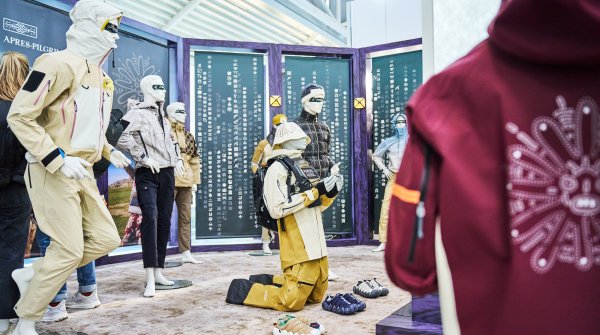 Sports BusinessSustainable ideas for store design
Sports BusinessSustainable ideas for store design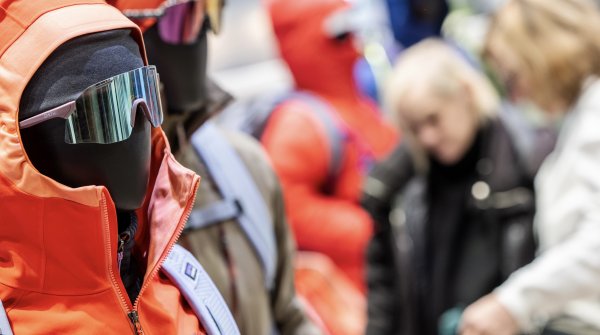 Sports BusinessSports retail in transition: the future playbook for 2025
Sports BusinessSports retail in transition: the future playbook for 2025
- ISPO awards
- Mountain sports
- Bike
- Design
- Retail
- Fitness
- Health
- ISPO Job Market
- ISPO Munich
- ISPO Shanghai
- Running
- Brands
- Sustainability
- Olympia
- OutDoor
- Promotion
- Sports Business
- ISPO Textrends
- Triathlon
- Water sports
- Winter sports
- eSports
- SportsTech
- OutDoor by ISPO
- Heroes
- Transformation
- Sport Fashion
- Urban Culture
- Challenges of a CEO
- Trade fairs
- Sports
- Find the Balance
- Product reviews
- Newsletter Exclusive Area
- Magazine
